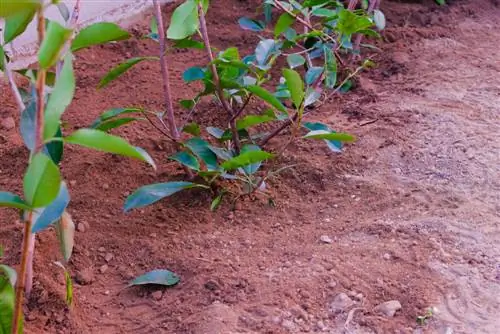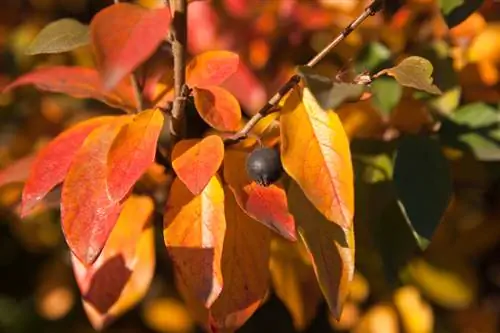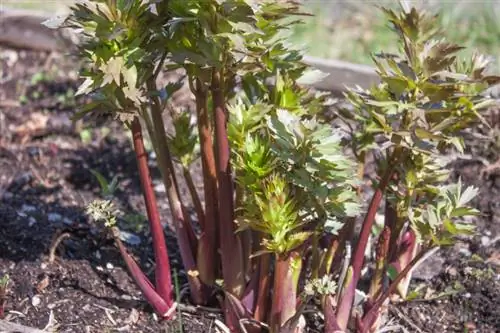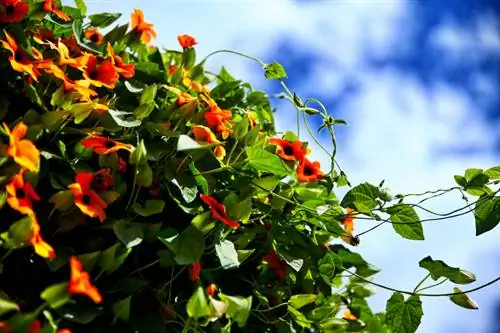- Author admin [email protected].
- Public 2023-12-16 16:46.
- Last modified 2025-01-23 11:21.
Cotoneasters impress with their striking foliage both in individual positions and in hedge plantings. Once the right location has been found, nothing stands in the way of preparing for planting.
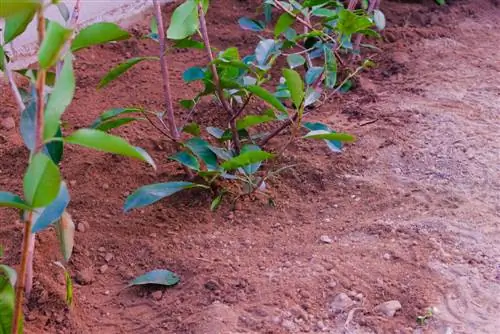
How do I plant a loquat correctly?
To plant loquats correctly, choose a wind-protected, partially shaded location with well-drained, moderately moist soil. Plant in spring, dig a sufficiently large hole, place the plant in the middle and fill it with compost (€12.00 on Amazon) enriched excavation.
Selection of location
The trees are sensitive to dry winds and like a sheltered location near walls or other trees. Since the roots cannot tolerate waterlogging, the soil should not be too heavy. Water can drain poorly in clayey soils. A substrate with sandy grain sizes, through whose pores the water drains away quickly, is better. Loquats adapt to the pH value of their location.
Prefer loquats:
- a permeable substrate
- partially shaded conditions
- moderately moist soils
- wind-sheltered locations
Preparations
Although the tree can be planted in autumn, the best time for planting is spring. After planting in autumn, there is a risk that the shrub will not be well rooted by the onset of winter. Dig a hole in a suitable location. The hole should be twice as wide and deep as the plant's pot base. Before placing the plant in the hole, submerge the pot ball in a bucket of water. It soaks up water and is therefore easier to remove from the pot.
Planting
Make sure the plant is vertical and centered in the hole. The surface of the bale should be level with the ground surface. Then fill the planting hole with the excavated material, which has ideally been enriched with compost (€12.00 on Amazon). The plants use the available nutrients in the substrate to develop their roots. To compact the substrate and close holes, gently tamp the soil around the ball. The substrate also bonds and closes after a penetrating pour. At the same time it helps the plant to root.
Tips for planting correctly
Cotoneasters are an eye-catcher when placed alone. If you want to create a hedge of loquats and other trees, depending on the variety, one or two plants per meter are sufficient. Three plants per meter are possible. They create a dense and compact hedge. Note that the microclimate is particularly humid in very dense stands. The result is a lack of ventilation. The humidity provides good living conditions for fungal diseases.

